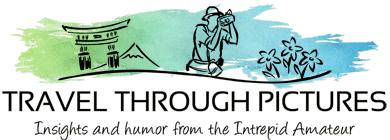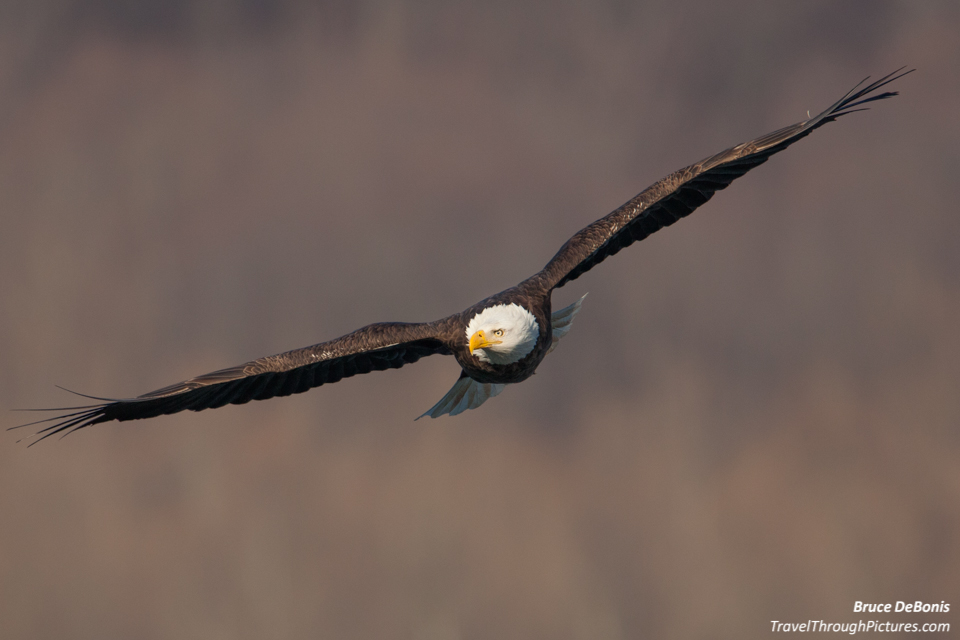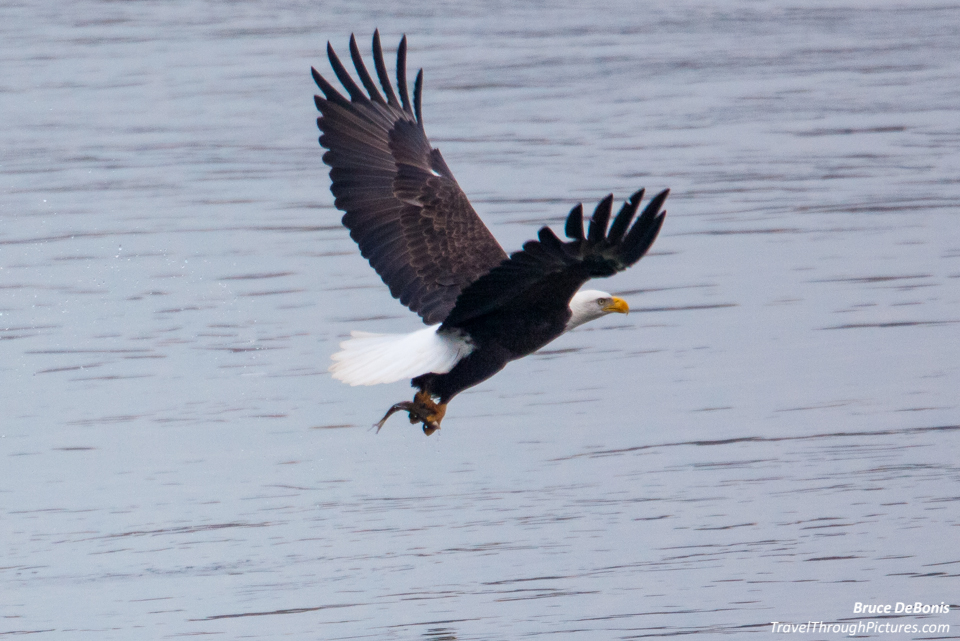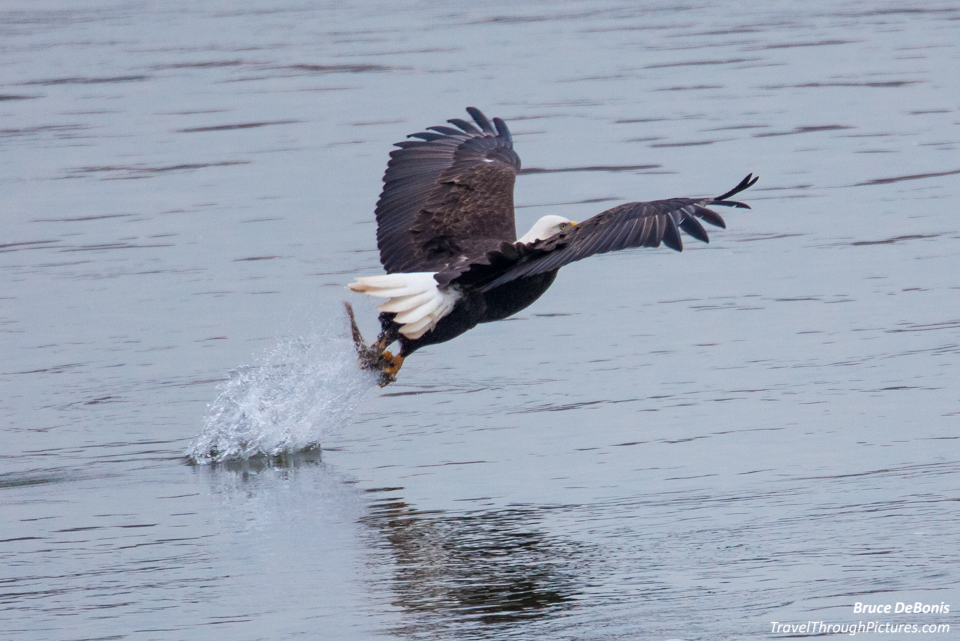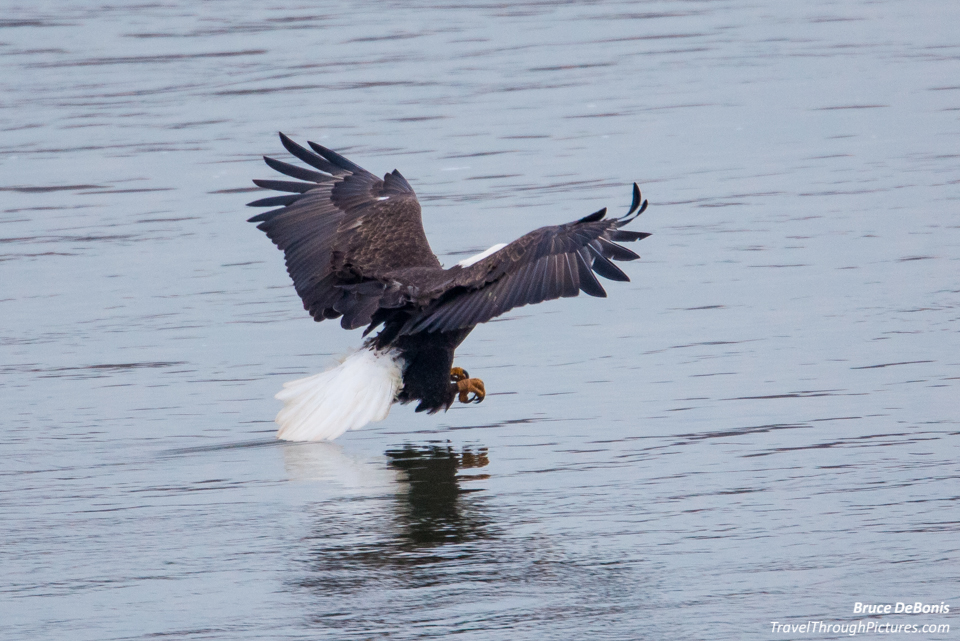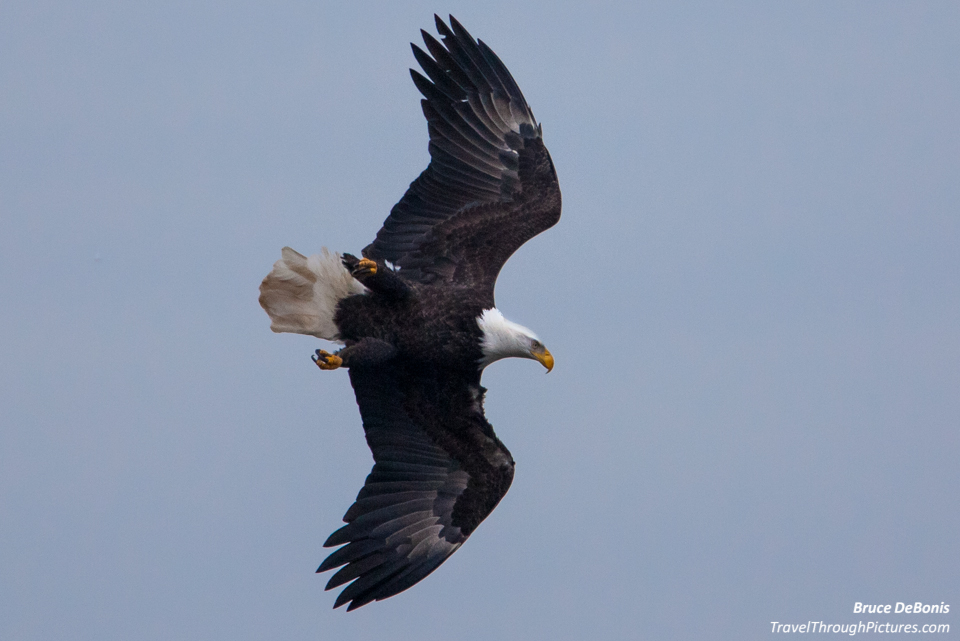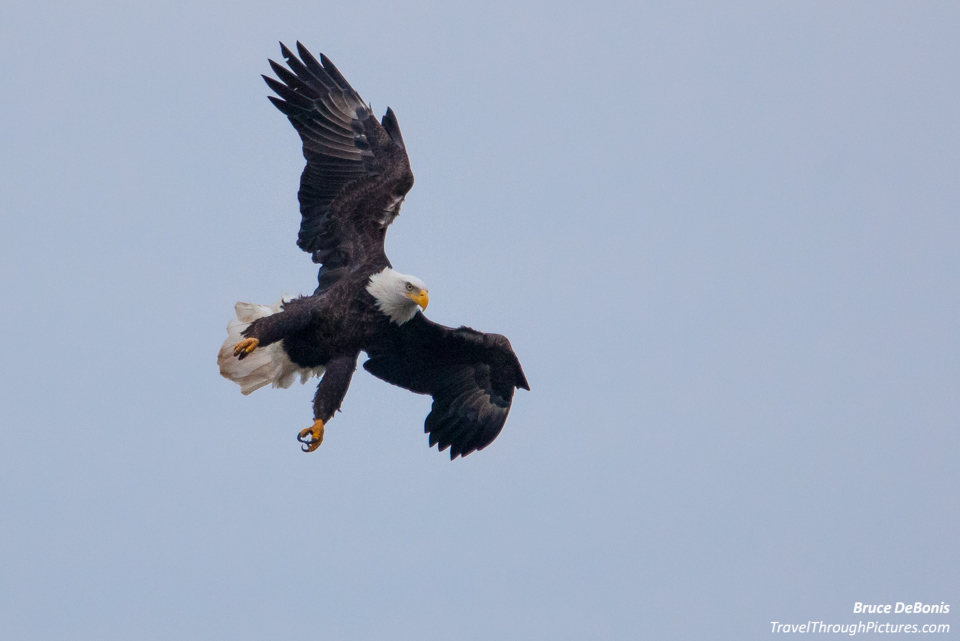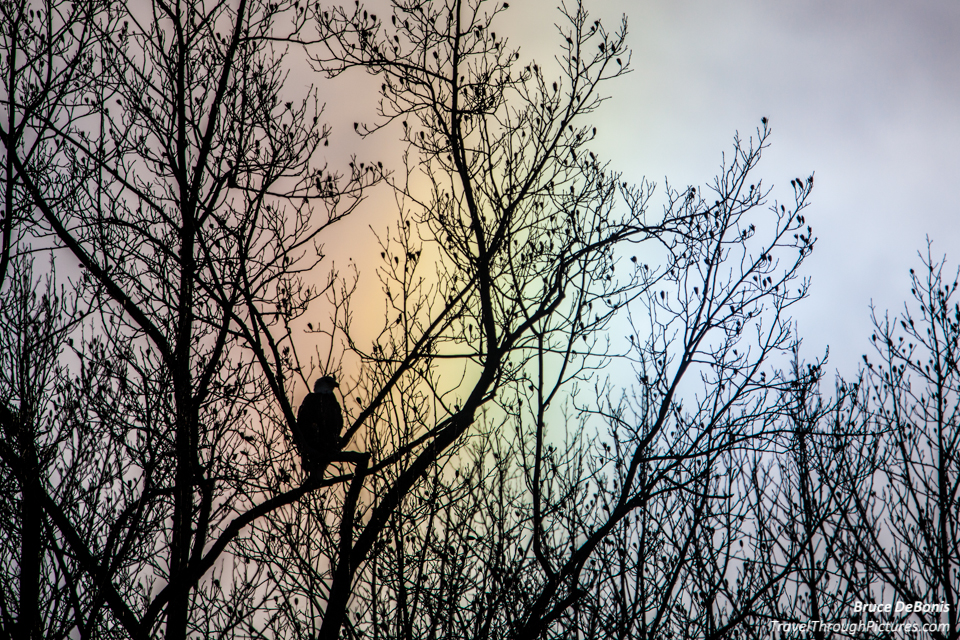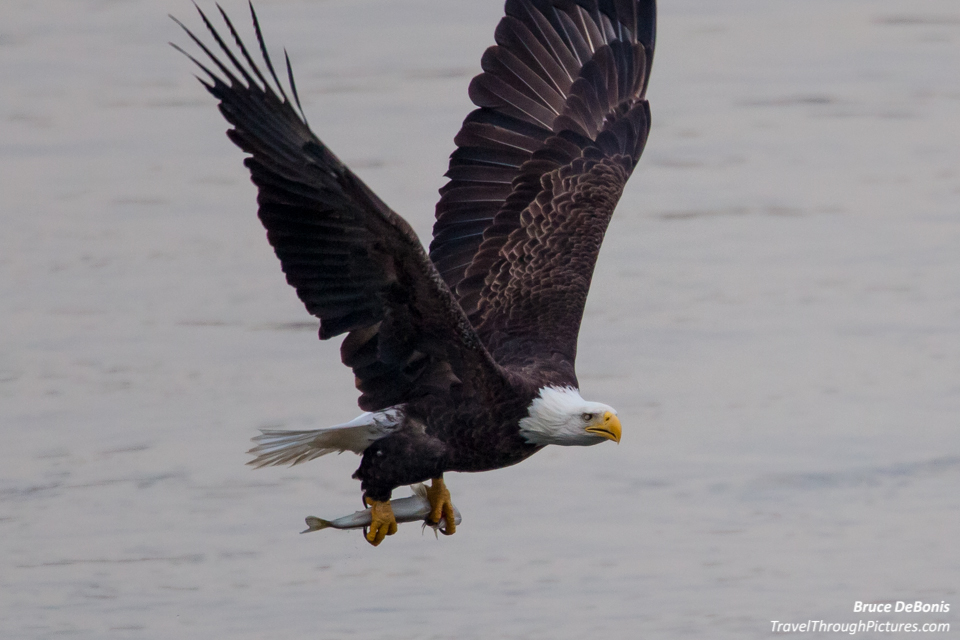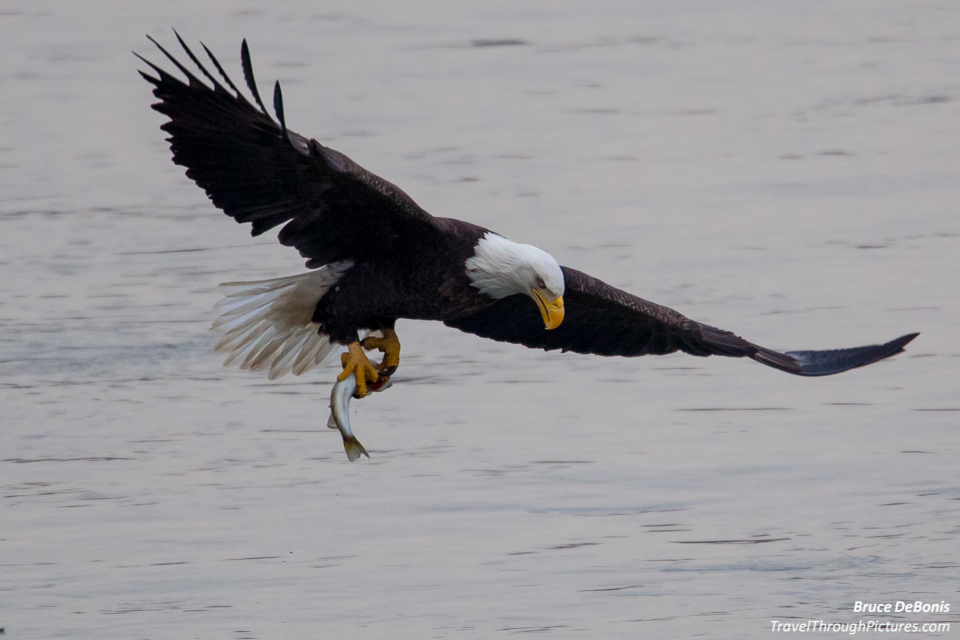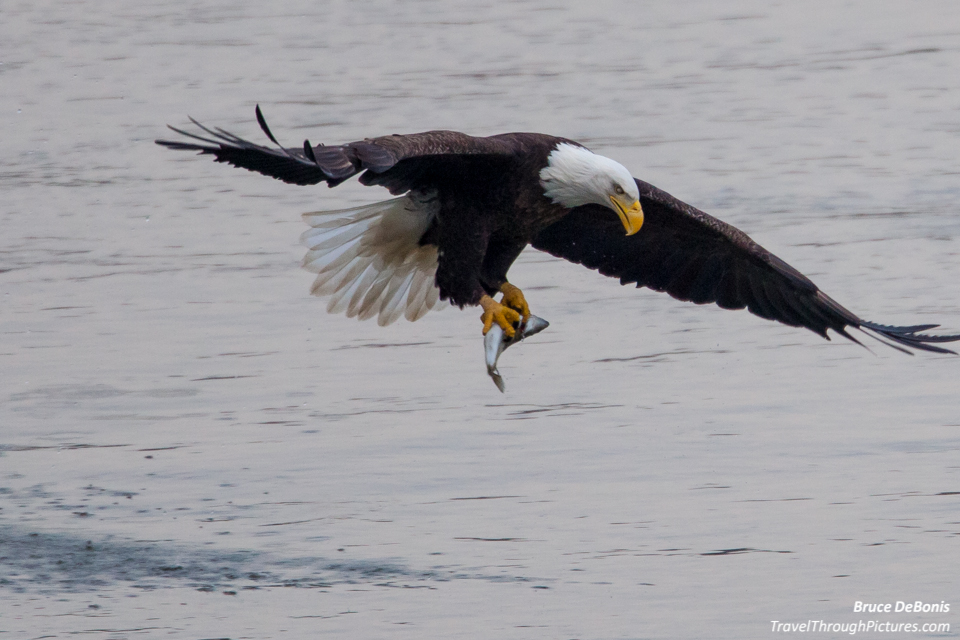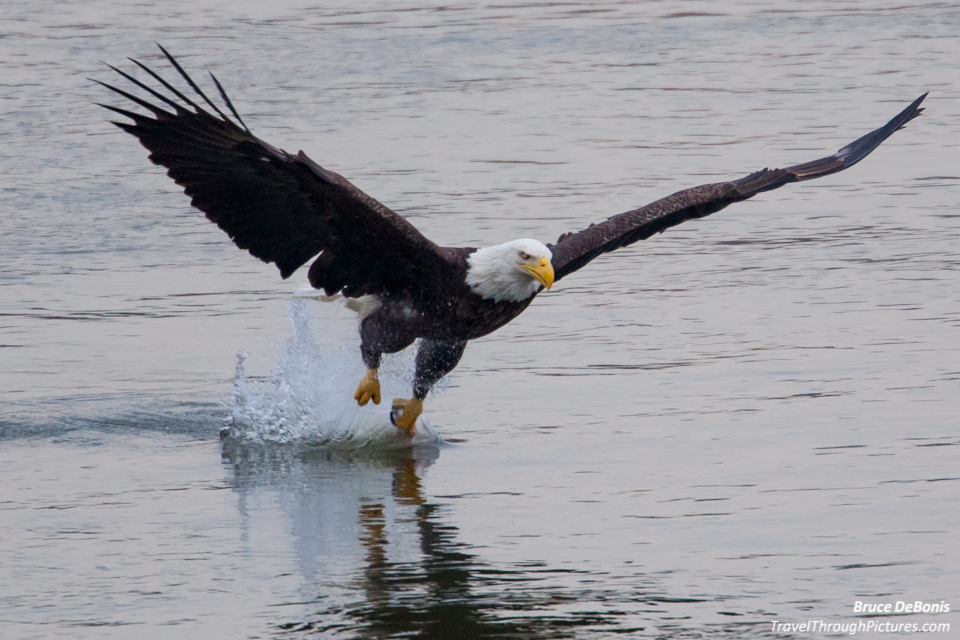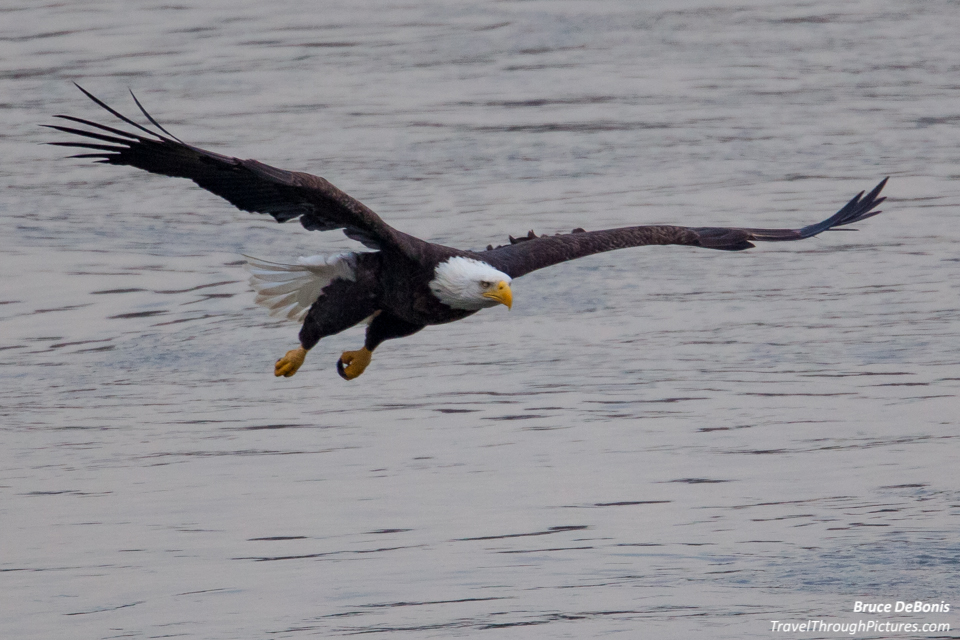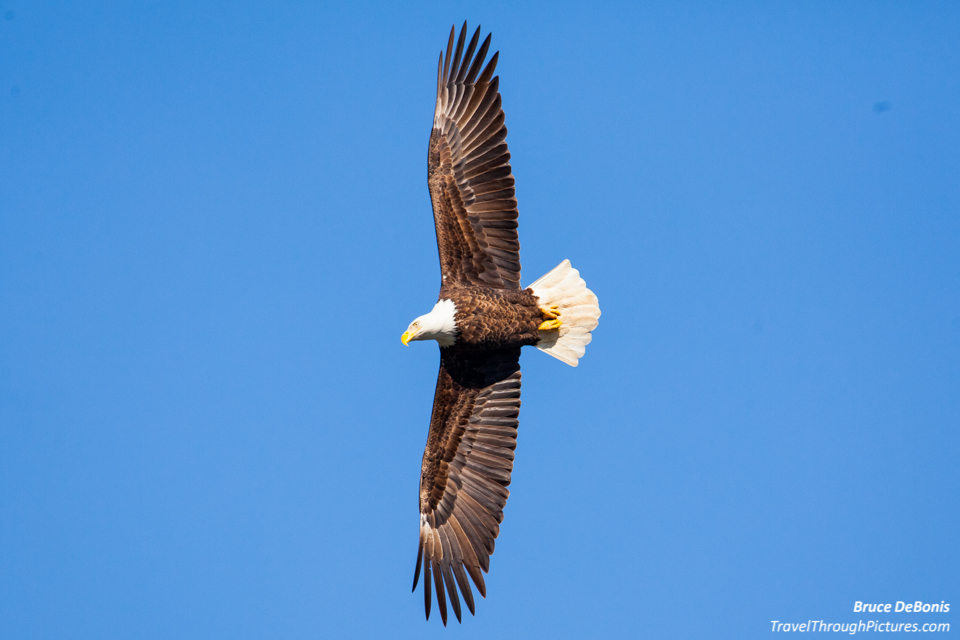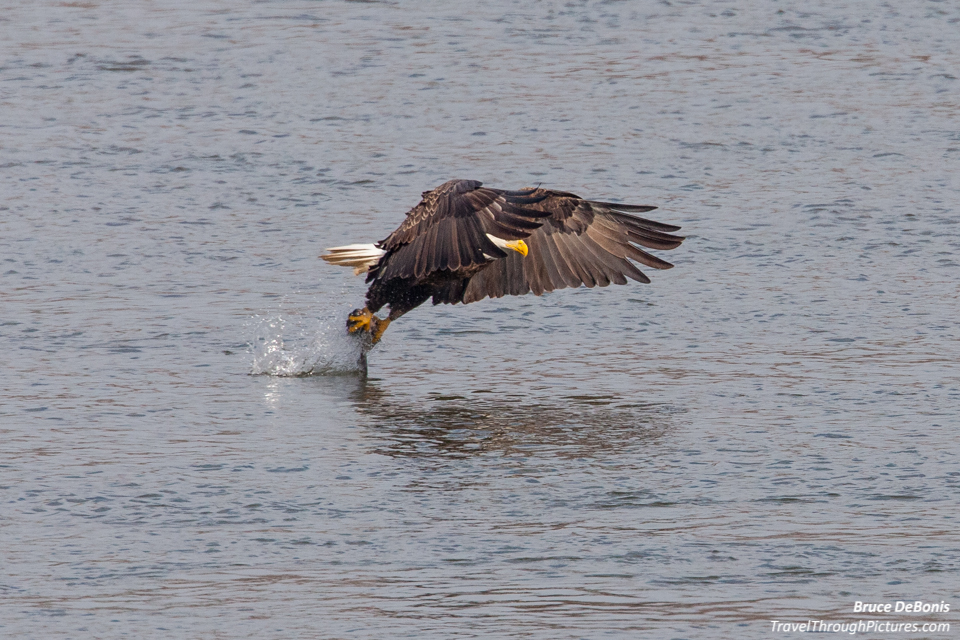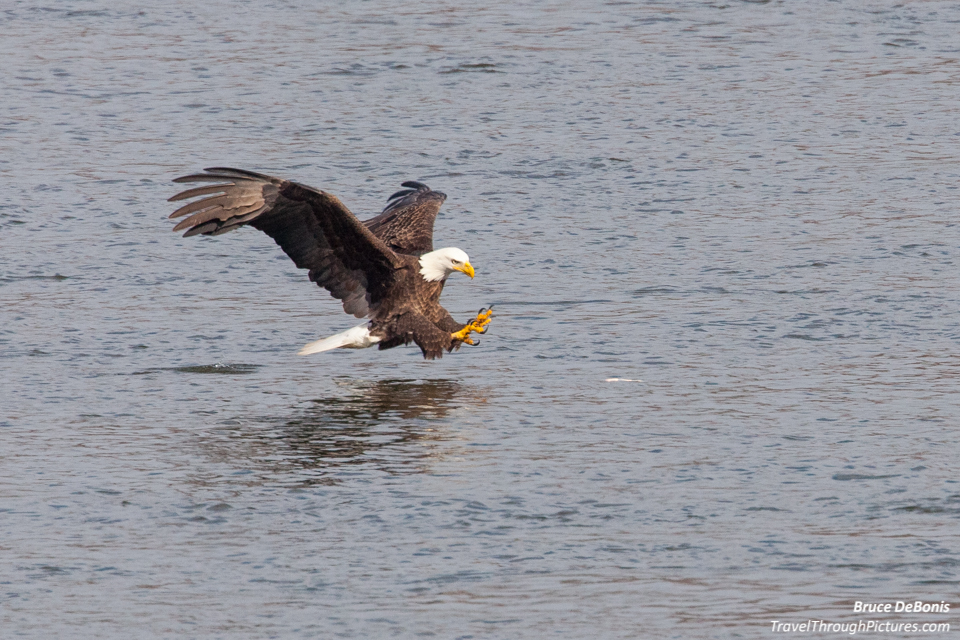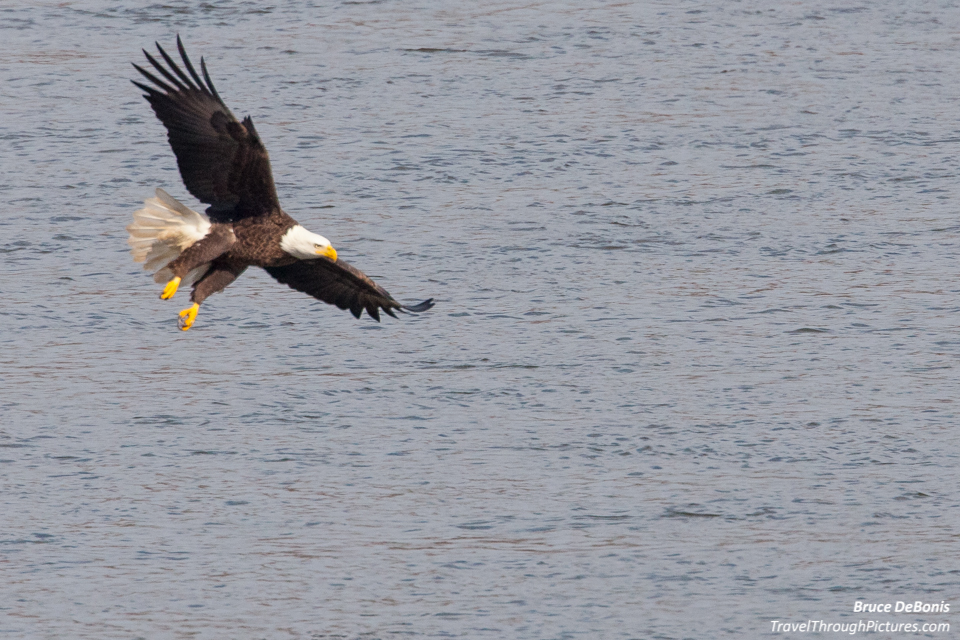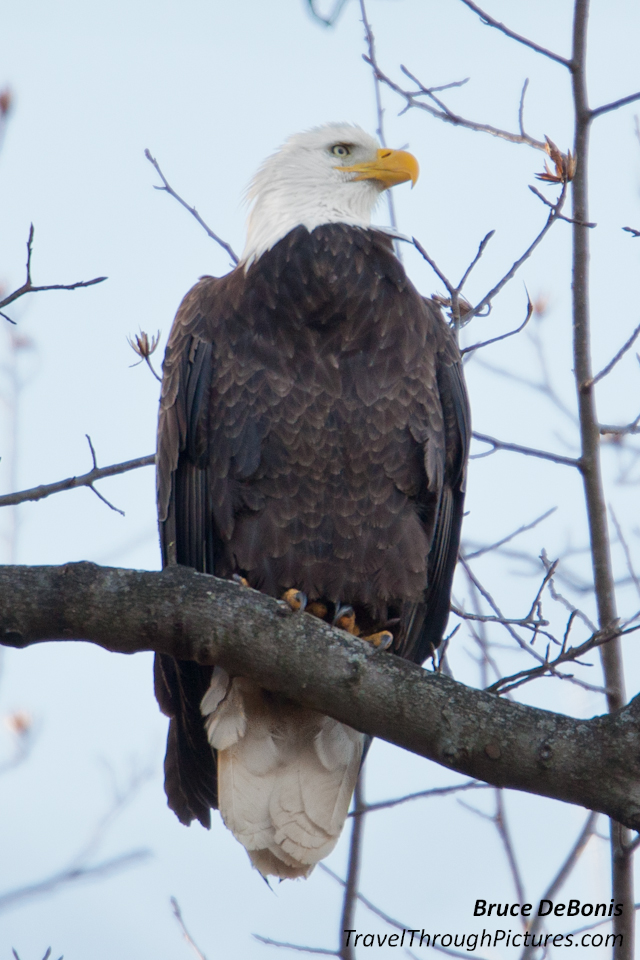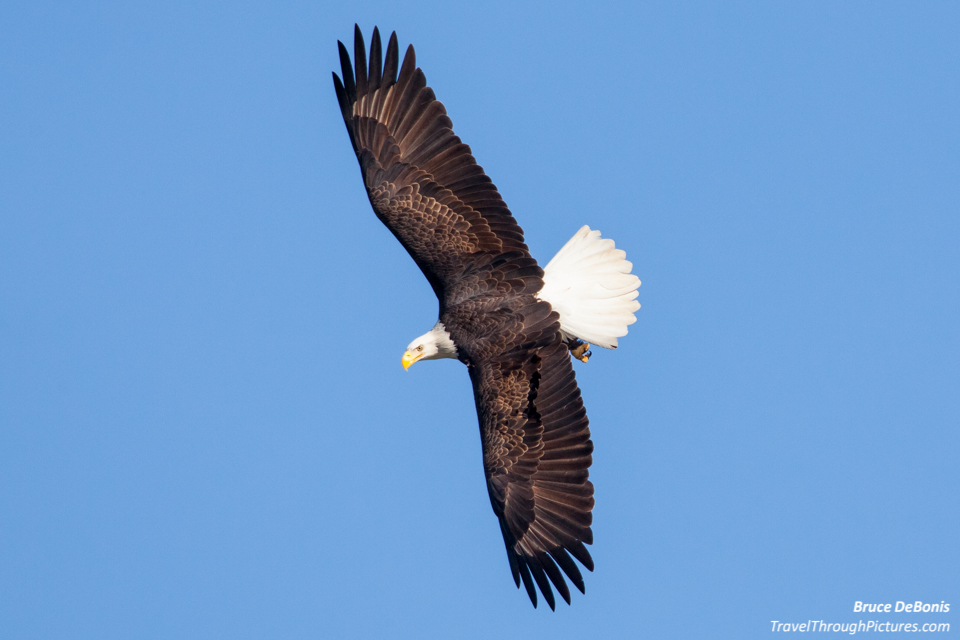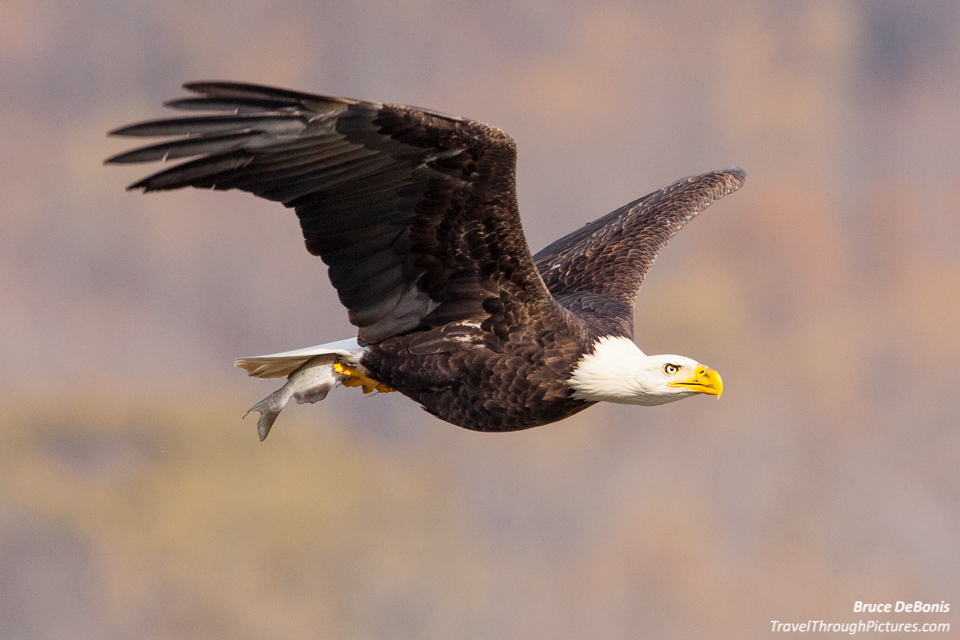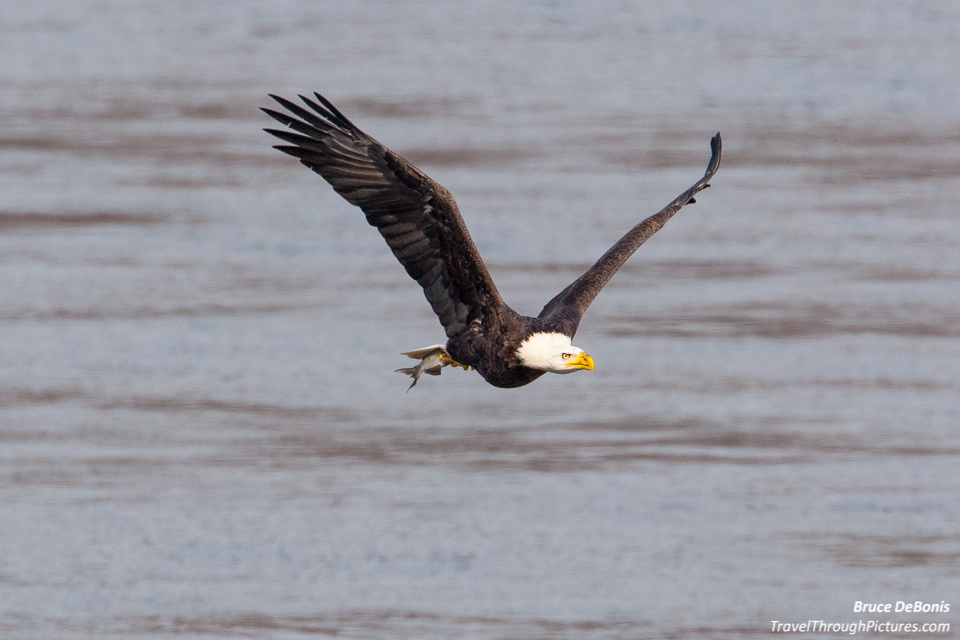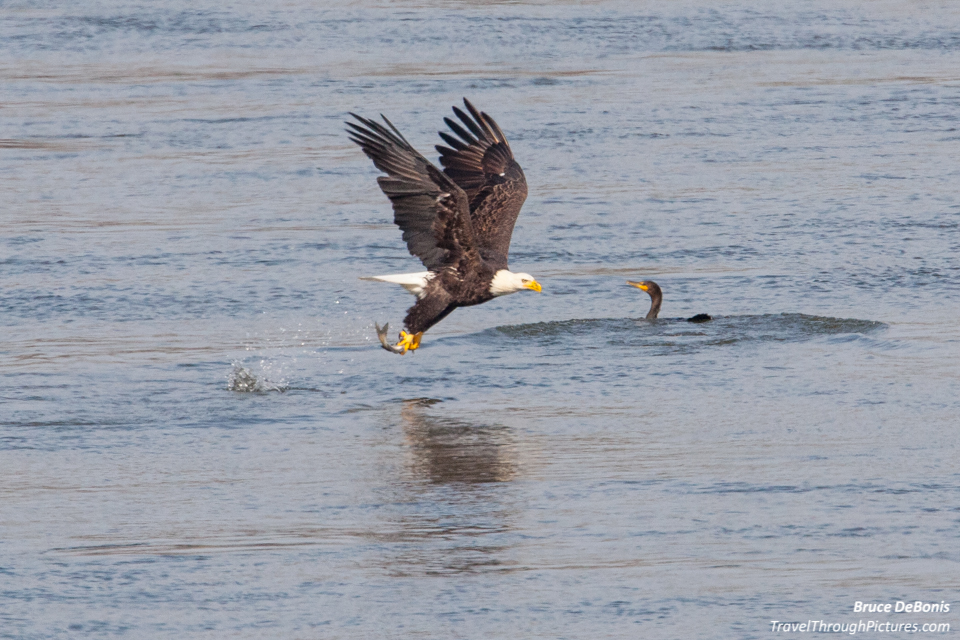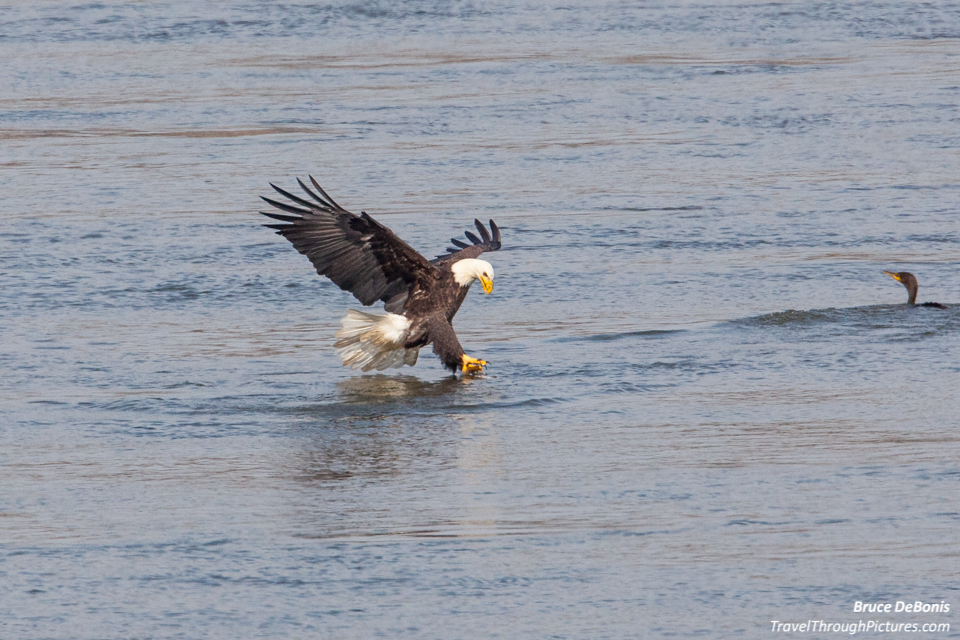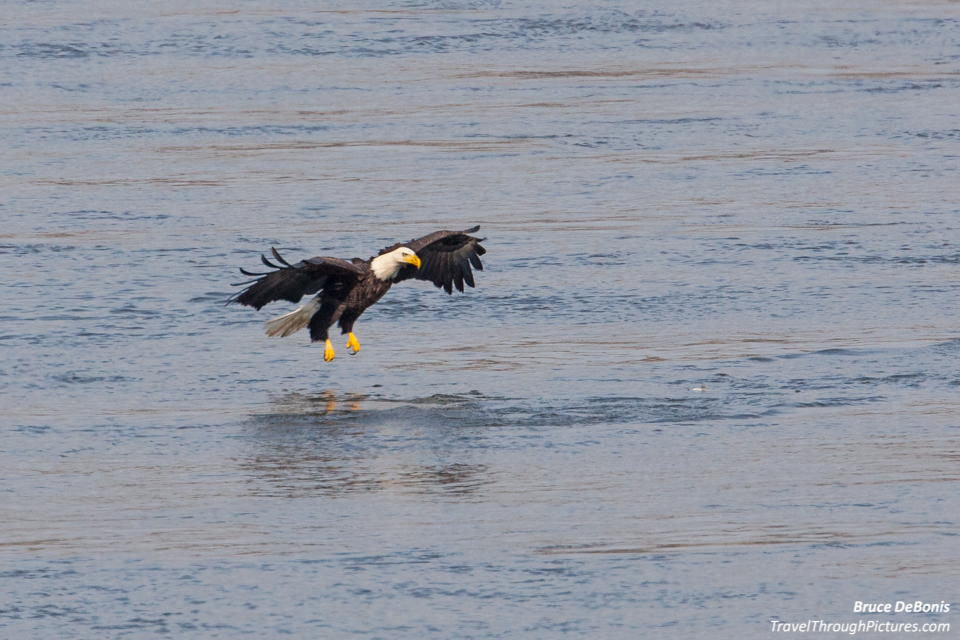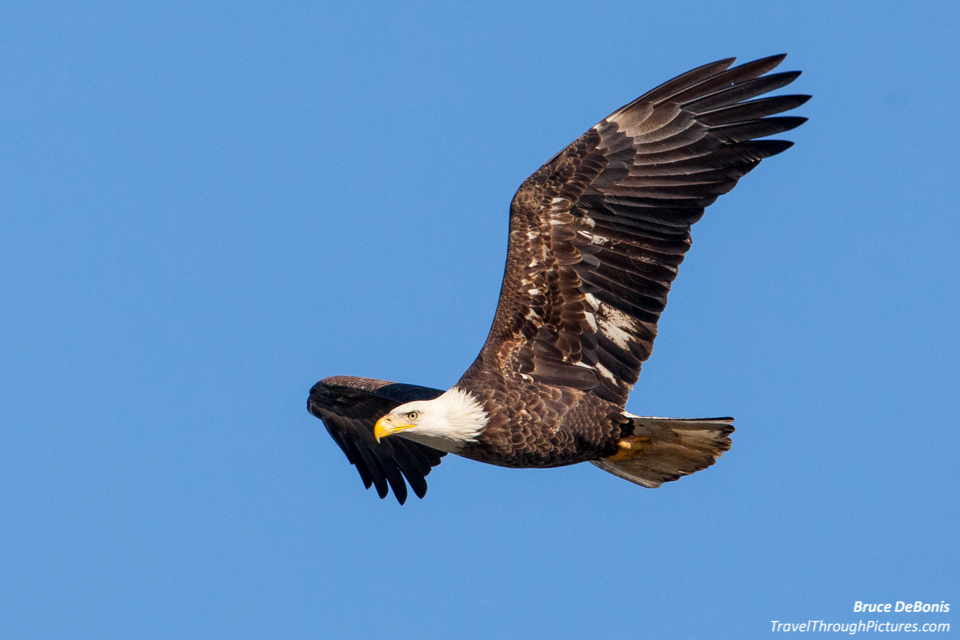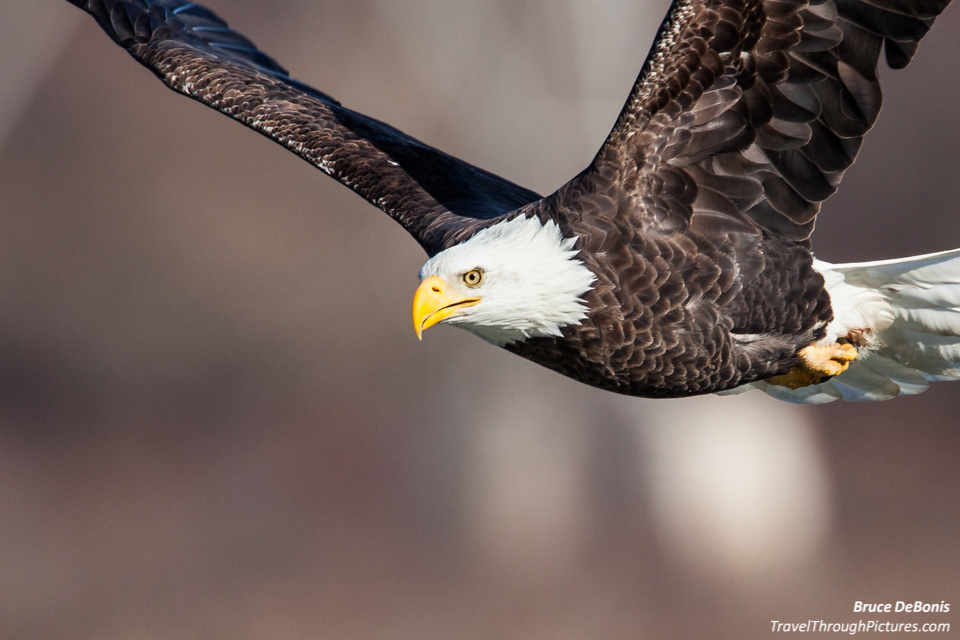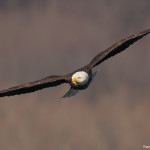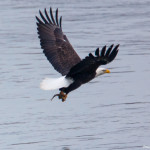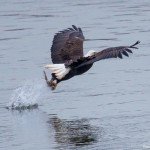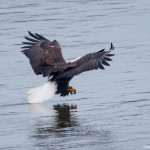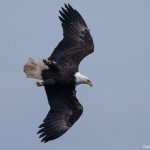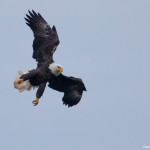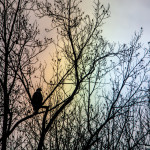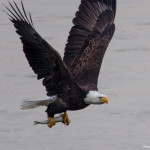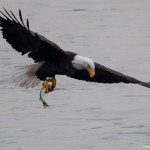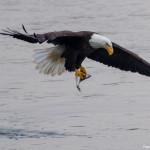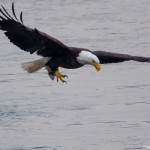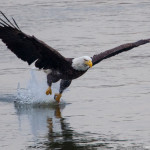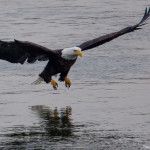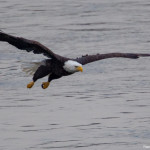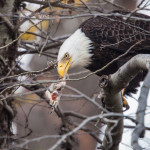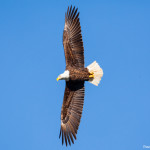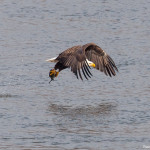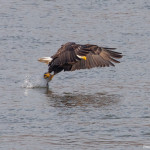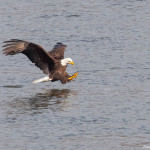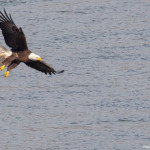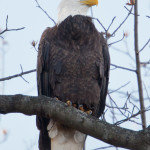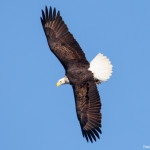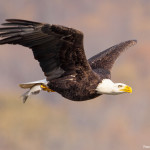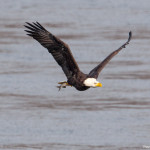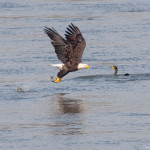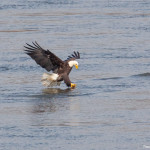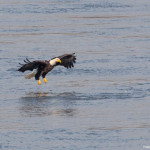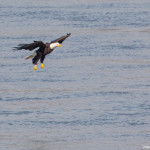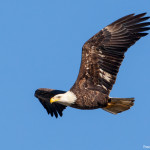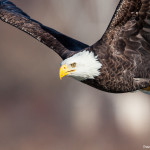More Killer Eagle Shots & Advice From a Real Professional!!!
Here are a few more of my Eagle shots from Conowingo Dam and while very few are good and none great, I had a ton o’ fun taking them. I was privileged to watch Eagles do barrel rolls, lock talons in pinwheel spin, and gloriously crap on rocks. The eagles congregate at a Maryland dam located at the mouth of the Susquehanna River where it dumps into the Chesapeake Bay. Peak eagle viewage is in November until mid to late December when they start leaving to build nests and lay eggs.
In my last blog article on Eagles (click here), I described how to set exposure for these birds in flight, but I thought I would share some insight into how a pro sets up his camera and approaches Eagle photography. In my instructional blogs, I try to distill this complex stuff into simple approaches that I use day in and day out, but when it comes to a professional, well, let’s just say their brains are wired differently than us mortals.
The photos on this page are mine, but I thought you would like to read about how a pro, Bill Jobes, sets exposure.
Bill Jobes on Setting Exposure (he is a real pro!)
 Bill Jobes is friend I met while visiting one of our national nature reserves in New Jersey. Bill is an ex-professional news-man and a real pro at photography. Just check his stuff out here: www.BillJobes.com. I asked him how he nails exposure at Conowingo dam when he shoots these eagles, and, well here it is in his own words:
Bill Jobes is friend I met while visiting one of our national nature reserves in New Jersey. Bill is an ex-professional news-man and a real pro at photography. Just check his stuff out here: www.BillJobes.com. I asked him how he nails exposure at Conowingo dam when he shoots these eagles, and, well here it is in his own words:
“As for settings, there are so many variables that it’s mind-numbing. But here are some general, and I do mean ‘general’ guidelines that I use. At the dam, for water-level shots, I meter off the rocks on the island to get a neutral gray setting. Then I usually use that for ‘fishing’ shot low down. I might even dial in a third stop or so of negative exposure comp to save the whites.
For sky shots, I first meter off the sky. Then, if it’s cloudy, I go as high as plus-three exposure comp. A lot of the time it’s plus 2.7. For bright sun, I keep it as-is for the sky setting, or increase it by up to 1.7 on the plus side.
But here’s the rub, and most guys miss this critical variable which we have no control over other than when to the click the shutter: When the eagle turns into the light and the sun illuminates the under-wing feathers, exposure at just the ‘sky’ metering setting is usually perfect. When one part or the other of the bird is in shadows (for the wings) or, bright sun (head and tail) …. ANY positive exposure comp can blow the whites or save the darks … depending. It’s maddening trying to guess what will occur. And it’s always a guess. The bird goes where it pleases !
For my part, I am constantly evaluating the light, deciding ahead of time which shot I want (sky or water) … and adjust from there. My fingers are twirling dials all day long !”
Thanx Bill, I think I will toss my mega-dollar camera into the river now and just give up. I am heading out now to buy an old Kodak Instamatic and stop worrying about this stuff.
More of my eagle posts:
My Equipment:
- Canon 5D Mk II
- Canon 500mm L f/4.0 IS
- Canon EF 1.4x II extender (teleconverter)
- Gitzo 3530LS carbon fiber tripod
- Wimberley II gimbal head
- LightRoom 4 for RAW post processing
- Long underwear, Freehands gloves, and patience
